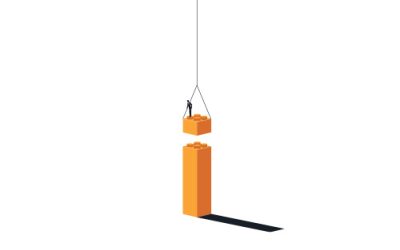Pricing your ad inventory isn’t just a finance decision — it’s a strategic one that can shape how you sell, who you attract, and how fast your revenue grows. Whether you’re offering direct-sold placements, newsletter sponsorships, or podcast inventory, one question inevitably comes up:
Should we charge a fixed price or go with CPM?
For media companies and publishers navigating today’s fragmented digital ecosystem, choosing between fixed-rate pricing and cost-per-thousand (CPM) models isn’t always straightforward. Each option impacts your ad sales pipeline, forecasting accuracy, and team workflows differently.
Here’s how to evaluate the trade-offs — and how your ad sales CRM can support smarter pricing decisions across the board.
Understanding the Two Models for Ad Sales
Fixed Price
In a fixed price model, a package is sold for a set amount — regardless of impression count. Think newsletter sponsorships, homepage takeovers, or podcast reads. These deals often bundle visibility with brand alignment.
Fixed pricing gives your team predictable revenue and is easier to pitch, especially for premium placements and brand-first campaigns. However, it lacks scalability and doesn’t always reflect the value of high-volume formats. Fixed rates can also make it harder to standardize pricing across multiple ad units or formats.
CPM (Cost per Thousand Impressions)
CPM-based pricing charges advertisers based on the number of impressions delivered. It’s the dominant model in programmatic and scalable digital buys.
This approach is built for optimization and flexibility. Advertisers appreciate its performance-based structure, and it works well for remnant or high-volume inventory. The tradeoff? Revenue is harder to predict, and under-delivery can lead to makegoods. Plus, CPM pricing can commoditize your inventory if it’s not carefully packaged or positioned.
The Strategic Trade-Off
Whether fixed price or CPM makes more sense often depends on your audience, your product mix, and the way your team sells.
Publishers with focused, niche audiences and strong brand equity tend to do well with fixed rates — especially when selling sponsorships or direct placements. On the other hand, larger teams selling broad digital reach or participating in programmatic marketplaces may lean toward CPM for the scale and flexibility.
And many media companies don’t choose one or the other — they use both. Fixed-price options are great for premium inventory and key relationships. CPM works well for scaling inventory and monetizing less-visible placements.
Where Your Ad Sales Media Sales CRM Fits In
Pricing decisions don’t exist in a vacuum — and they aren’t static. Your digital ad sales CRM can give you a major advantage by helping you:
Track how different pricing strategies perform. Forecast revenue based on CPM delivery or fixed-rate bookings. Compare the profitability of different campaign types. And package your inventory in ways that align with your overall sales strategy.
A good media sales CRM brings structure to flexible deals. It allows you to set minimum CPM thresholds, apply templated pricing for fixed-rate proposals, and ensure ad ops, finance, and sales are all aligned on what was sold — and what needs to be delivered.
A Real-World Example
Imagine your team offers a flat-rate $3,000 newsletter sponsorship each week, while also selling display banners on a CPM basis.
With the fixed price: Your sellers can quote fast, your revenue team can project income clearly, and your post-campaign work is straightforward. Everyone knows what’s promised — and what’s due.
With CPM: Your buyers can scale campaigns up or down based on budget. You’re able to respond to market demand in real time. And you can generate incremental revenue from lower-tier inventory that wouldn’t justify a flat rate.
Ultimately, the key is matching the model to the product — and equipping your team to execute either efficiently.
What to Watch Out For
Switching pricing models — or juggling both — requires alignment. Here are three areas to keep in check:
Fulfillment
Does your ad ops team have the tools and processes to monitor impression delivery, track placement timing, and flag underperformance before it becomes a billing issue?
Billing
Your finance team needs clarity on how to invoice based on actuals (CPM) or flat commitments. A modern digital ad sales CRM should help standardize this and reduce manual reconciliation.
Sales Training
Reps need to know when to pitch each model — and how to communicate value beyond the numbers. A proposal builder within your CRM can make this easier by linking pricing to inventory and packaging logic.
Final Takeaway
There’s no one-size-fits-all solution. But there is a right-fit model — or blend of models — for your audience, your team, and your product lineup.
Fixed price and CPM aren’t at odds. They’re tools in your toolbox. What matters is how you use them — and whether your systems are equipped to support each one.
The most resilient publishers think beyond pricing mechanics. They lean on flexible, purpose-built tools like a media sales CRM to make sure every deal — no matter the model — flows cleanly from pitch to payment.



